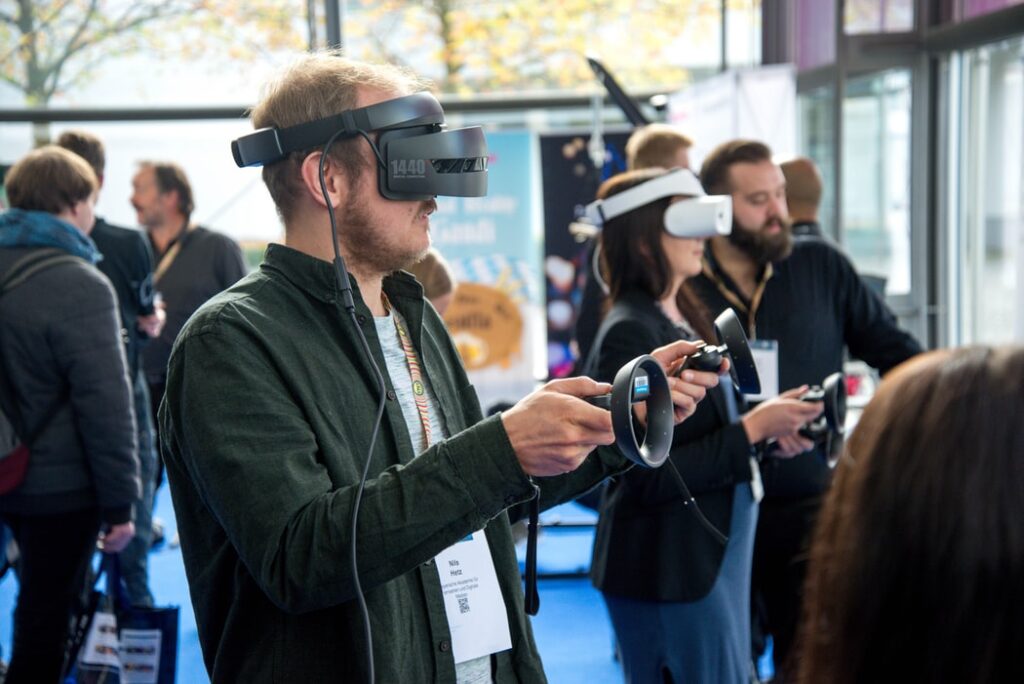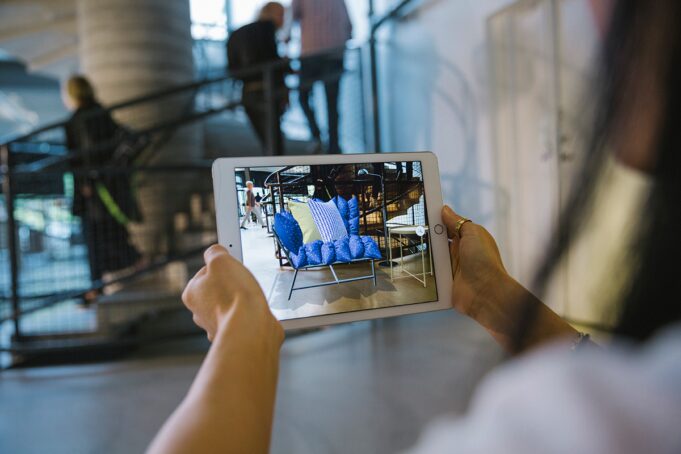Do you know what Augmented Reality (AR) is? If you know the history of the hit game Pokémon GO you will know what I am talking about. A few years ago, we could see millions of people around the world chasing, hunting Pokémons with their cell phones. A worldwide craze!
The example of Pokémon GO serves to show a practical application of the potential of augmented reality. And, of course, this technology has many more applications than simply going out to hunt a Pokémon.
The intense days of Pokémon hunting were just a glimpse of things to come. According to Statista, investment in augmented reality is likely to grow globally at a breakneck pace. By 2025 that industry is expected to reach $198 billion. Augmented reality is not a thing of the future, but of the present.
The human thirst for curiosity and new experiences is infinite. Today, many users want more than just reality as it is. AR offers that experience, that plus or spice that “improves” the usual reality.

One of the applications of Augmented Reality that is most appreciated by investors, companies and business owners is the time and resource savings it provides. Augmented Reality not only offers a new and improved natural environment but can be geared to improve ROI significantly.
Many companies have jumped into the race to implement and take advantage of the boost that augmented reality can give to their operations and sales.
The example of IKEA’s “virtual furniture“, one of the pioneers in the use of augmented reality, is an excellent example of how this technology has successfully broken into the field of sales.
A few years ago, Ikea developed an app for mobile devices based on augmented reality. The app promised to make shopping easier by allowing furniture to be placed virtually in the home space.
The idea was simple. We focus the camera of the cell phone on the living room, for example. This way we can see how the table and the four chairs that we liked so much when we looked at the Swedish company’s catalog look.

The cell phone screen returns the image of a room where the (virtual) furniture appears, arranged with the correct perspective and size.
Another sector where augmented reality has had multiple applications is the fashion industry. A few years ago, virtual fitting rooms seemed like a thing of the distant future. Today they are a reality. You can literally try on a pair of glasses or a pair of pants without having to go to the physical store.
In advertising, augmented reality has enormous potential. According to experts, it offers more intense experiences than the traditional ads we all know. What will we see next? Will we be able to distinguish between what is real and what is not real, but just an “augmented experience”?
Do parents find that today’s children spend too much time in front of a screen? Are our children leaving the real world behind?

Augmented Reality is also going to change that scenario. That split attention between screen and physical world could change.
Technology and developers are challenged to create immersive experiences that integrate the physical and the digital. Making children in the digital age more active is something that could be achieved with augmented reality techniques.
Sometimes we think that the cell phone is here to stay, but who knows? Maybe we’ll soon be wearing augmented reality glasses, with voice or gesture commands (telepathy commands? Oh my!).
Letting go of the phone could be a given for kids who are overly dependent on screens right now. With gadgets like AR glasses, parents and kids could invent more active games, based on geolocation, for example.
The way we receive and consume information could change radically due to advances in augmented reality.

The implications of this technology for education or simply for the travel tourism market are immeasurable. Could we visit classical Greece? The pyramids of Egypt in their heyday? Probably yes.
With augmented reality, traditional operating instructions manuals, those of paper and graphic illustrations could become obsolete in a short time. With futuristic glasses or our cell phones, we could superimpose text and get advice through video instructions.
The online gaming industry is booming. There is fierce competition among operators seeking to remain competitive. The restrictions imposed on the world by the pandemic have triggered interest in online gambling.
Players are becoming more demanding every day. They demand more innovative games and gaming options. The solution lies in incorporating new technologies. It is no longer enough to broadcast gambling games on video. To keep people’s interest, more and more is needed, not just traditional streaming. Augmented reality can offer a solution.
The first multiplayer casino platform with augmented reality was launched as recently as July 2024. According to expert analysis, the market for Extended Reality (ER) – which includes augmented reality and virtual reality – is expected to exceed $125 billion per year by the end of 2026. Opportunity at hand!

AR has much to offer to enhance games such as live dealer games. It can ensure the interaction players desire, offering an experience closer to reality.
Presumably, AR linked to live dealer games increases interest in the game, further increases retention time at gaming sites, and also expands the ability to cross-sell.
From the users’ perspective, finding the casino that best suits their needs and desires is also a challenge. Fortunately, there are online services like CasinoSelect to assist in the decision-making process.
Augmented reality and virtual reality are here to stay in the world of online gambling. Everyday users want more and more technology and, consequently, they are looking for providers that offer them what they are looking for. Adopting a new technology in time is an advantage for online casino operators.
As technology has advanced, the way online casinos operate has changed dramatically. Remember the online casinos of 20 years ago? They were simple sites that offered only a few additional features. Today, the reality is different.















